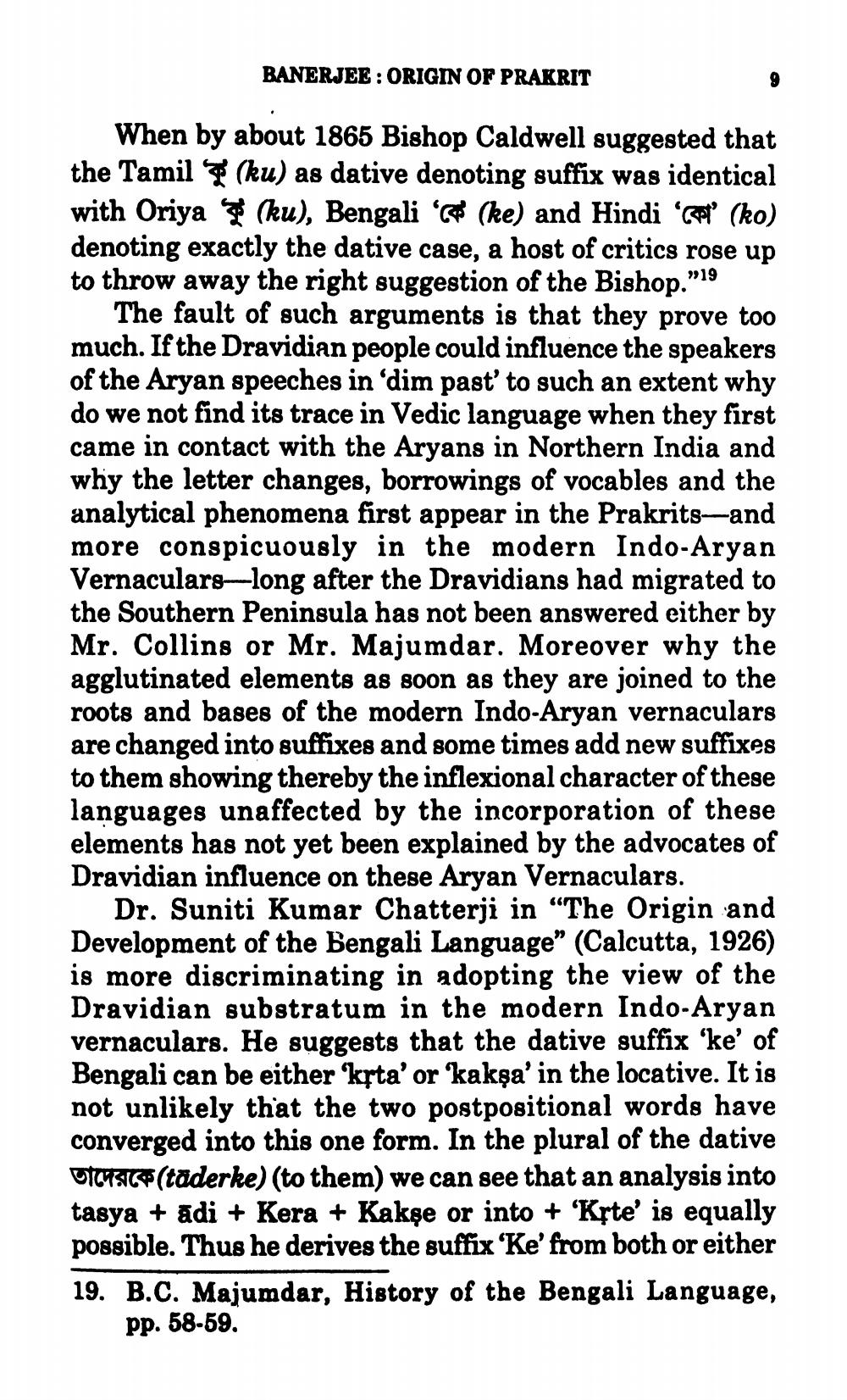________________
BANERJEE : ORIGIN OF PRAKRIT
When by about 1865 Bishop Caldwell suggested that the Tamil (ku) as dative denoting suffix was identical with Oriya (ku), Bengali ' (ke) and Hindi 'Cap (ko) denoting exactly the dative case, a host of critics rose up to throw away the right suggestion of the Bishop."19
The fault of such arguments is that they prove too much. If the Dravidian people could influence the speakers of the Aryan speeches in 'dim past to such an extent why do we not find its trace in Vedic language when they first came in contact with the Aryans in Northern India and why the letter changes, borrowings of vocables and the analytical phenomena first appear in the Prakrits-and more conspicuously in the modern Indo-Aryan Vernaculars-long after the Dravidians had migrated to the Southern Peninsula has not been answered either by Mr. Collins or Mr. Majumdar. Moreover why the agglutinated elements as soon as they are joined to the roots and bases of the modern Indo-Aryan vernaculars are changed into suffixes and some times add new suffixes to them showing thereby the inflexional character of these languages unaffected by the incorporation of these elements has not yet been explained by the advocates of Dravidian influence on these Aryan Vernaculars.
Dr. Suniti Kumar Chatterji in “The Origin and Development of the Bengali Language” (Calcutta, 1926) is more discriminating in adopting the view of the Dravidian substratum in the modern Indo-Aryan vernaculars. He suggests that the dative suffix 'ke' of Bengali can be either ‘krta' or 'kakşa’ in the locative. It is not unlikely that the two postpositional words have converged into this one form. In the plural of the dative UTCHSCP(taderke) (to them) we can see that an analysis into tasya + adi + Kera + Kakşe or into + 'Krte' is equally possible. Thus he derives the suffix 'Ke' from both or either 19. B.C. Majumdar, History of the Bengali Language,
pp. 58-59.




